Proverbs and sayings about May HORIZONTALLY: 2. May will deceive - in ... will leave.4 ....

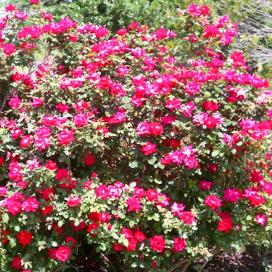
If after every winter, despite the efforts made, part hybrid tea roses it freezes or rots in your garden, but you really want to have roses in the garden, that is, a simple way out is to plant park roses.
Of course, some varieties of park roses sometimes resemble rosehip bushes, the shape of their flowers is not as exquisite as that of hybrid tea roses, but during flowering, the bushes are so abundantly covered with flowers that it seems that rose bushes exude a lingering and sentimental aroma. , descended from old paintings and tapestries. And the fruits of park roses are not only decorative, but also useful.
Those roses that we used to call park roses are more correctly called old garden roses. Modern park roses bloom throughout the season, their flowering is also exquisite, flower buds are formed not only on last year's shoots, but also on young shoots of the current year. However, the repeated flowering is no longer as friendly and plentiful as in early summer.
The best planting place for park roses will be a sunny, well-ventilated place on all sides, although park roses can grow in partial shade. Soil for park roses better fit loose, nutritious, it is good if it is loam (pH 6-7) with a high content of humus. If the clay soil is too heavy, it is advisable to add sand, well-rotted compost or humus to the planting hole. If the soil is sandy, then when planting a seedling of a park rose, you need to add compost to the hole, as well as a bucket of clay soil. The more correctly you fill the landing hole, the better the park rose will subsequently grow.


Is it worth removing withered flowers? Not always: in many varieties of park roses, the bushes are literally strewn with large fruits. They decorate the garden even in winter, serve as food for birds in winter. For this, the birds will thank you in spring and summer.
In autumn, in August-September, you need to pinch or cut young strong shoots by five centimeters. This contributes to the maturation of the shoots and allows them to better endure the winter.
The main thing in caring for adult bushes of park roses is the annual weak formative pruning. The easiest way is to form a bush in the form of a bowl, leaving 5-7 of the strongest shoots. You can read more about pruning park roses.
If the adult bushes of many park roses are winter-hardy enough and do not require any shelter for the winter, then it is still better to cover young seedlings. The base of the bush is spudded with earth for the winter, the bush itself is wrapped with kraft paper in 2-3 layers, roofing felt, nonwoven fabric. This cover saves rose bush from a sharp change in temperature during the day, the bright winter sun, which causes burns to the bark, and the wind in February and March, which enhances the effect of frost.
Do not worry too much if there were very severe frosts in winter. Even with severe frosting after radical pruning, park rose bushes recover quite quickly, young shoots grow from the base of the bush. But it should be remembered that flowering will only be next year, since flower buds are laid on 2-3-year-old stems and side shoots of the first and second order.
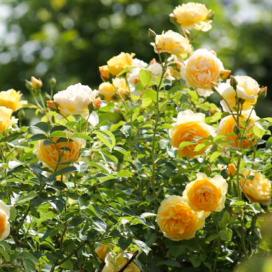
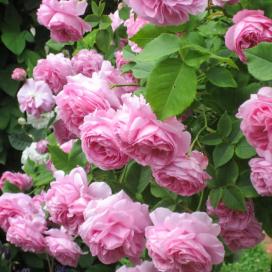
Used photos from sites: fatherscall.com, www.drodd.com, pulpbits.com
Park roses include cultivated rose hips and their various varieties, forms and types. This group of plants got its name due to its appearance and application in . Properly grown park roses are large bushes with abundant flowering.
Planting and caring for park roses do not require much knowledge and skills. So, you can plant shrubs in groups, singly or in the form of hedges near the curbs.
And an additional advantage of the plant, in addition to its beauty and decorativeness, is that park roses tolerate winter well even without special shelter. You can limit yourself as a winter shelter to a 20-cm layer of spruce branches, a film and a small layer of peat.
Caring for park roses mainly consists in their formative pruning, which is usually done in the fall, that is, for the winter. At the same time, bushes in the first and second years of planting practically do not need to be formed. Pruning concerns only cases when it is necessary to remove dry, weak branches. Faded roses can not be removed, because in most cases beautiful large fruits are formed from them.
You need to cut the bushes with a sharp pruner, and immediately process the cuts with garden pitch or simple oil paint. If the branch is too thick, you can cut it. Do not forget that the garden rose bush is very prickly, so it must be handled with gloves and a canvas apron.
Those shoots that remain after pruning should be slightly shortened, leaving 5-7 buds on each. In climbing types of roses, about 6 annual young shoots are left, and if there are few of them, then several two-year shoots can be left.
Bush rejuvenationTo rejuvenate the bush, it is subjected to total pruning, almost to the very base. This leads to the active growth of young shoots. This technique is also used in case of severe frost damage to the plant. If the stems are badly damaged during frosts, they are cut to the ground, forming a bush from several old branches.
The old branches begin to cut in early August. At the same time, the amount of added mineral and organic fertilizers is simultaneously increased.
Pruning garden rose bushes is necessary to achieve abundant flowering next year, and also in order to form a beautiful crown and strong shoots.
They plant a park rose with shoots that are pre-shortened and also cut the roots. Planting shoots is best in early spring, into prepared soil. Its preparation begins in the fall and consists in digging to a depth of half a meter, making a large number and oven ash.
If you decide to plant in the fall, then you need to sketch mounds of 25-30 cm over the planted seedlings to protect them from the cold. In order for the plant to take root better, it is recommended to moisten the roots in a solution of clay and mullein (1: 3), and also pour 1 dissolved tablet of heteroauxin into the solution.

It is best to plant park roses singly, in spacious holes in which the entire root system will fit well.
Best landing spotAn ideal place for growing park roses is well-lit and ventilated areas. In full shade, planting bushes is simply contraindicated, because there they can become infected with diseases and freeze out in winter.
It is also not recommended to plant them close to trees, as their roots will not be able to get enough moisture from the soil and nutrients. Especially undesirable is the neighborhood with birches, ash trees, maples and elms.
Roses are one of the most beautiful and common flowers. park roses grow into rather long and voluminous bushes and therefore are perfect for spacious summer cottages. To date, there are quite a few varieties of roses that do not require special experience in caring for them. We offer to see photo of popular park roses with names so that you can grow them with your own hands on the site.
It is park roses that are used for decoration. landscape design in areas with large area. Such roses, according to the photo and name, are frost-resistant. They are voluminous. Flowering stretches over a fairly long period of time.
Even with frostbite in the bush cold winter, in the spring, new shoots will begin to grow from the root of the rose, and the park rose will begin to grow again. In park roses, regardless of the varieties, in any case, the buds have a flat shape, and the petals are terry.
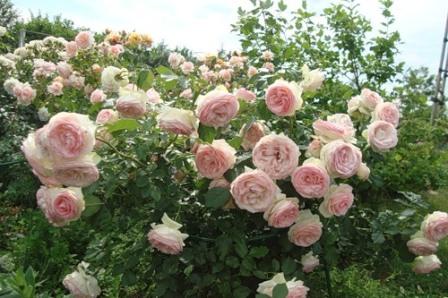
Photo of a park rose
The only drawback of these roses by name is a single, albeit rather long, flowering per year. But recently, varieties with double flowering have begun to appear. These roses are called remontant. Park roses have quite a lot of colors and shades in the photo, while each one is distinguished by its beauty and originality.

Photo of a red rose with the name
Colors and shades start with white and end with burgundy. After flowering, bright red fruits are formed on park roses, which remain on the bush until frost.
Canadian park roses were created for people who cannot take care of the bush with special care. The bush does not require pruning for the winter and perfectly withstands even severe frost. The rose can withstand temperatures as low as -45 degrees. This bush should be planted in a bright place. The soil can be any. The Canadian rose has several varieties.

Name: Canadian rose
"Explorer roses" great for hedges. The plant wraps around any structure and hides it from prying eyes, which allows you to plant it on arbors, fences and various buildings. The growth of a weaving bush reaches 3 meters. This type of rose practically does not get sick and has a pleasant pronounced aroma.
"Parkland roses" It has nice shape flower, which is strikingly different from other species. The trunk of the bush is not braided, which allows it to be planted in the middle of the site. The rose has many shades and tones. One of the disadvantages of this type of rose is the lack of aroma.
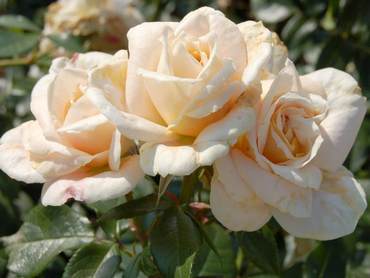
English park rose can be weaving and bushy. The buds are distinguished by their unusual beauty with double petals and a sweet smell. An English rose can decorate absolutely any area. Caring for such a plant is quite simple. The rose grows well both in the light and in a dark place. Moisture and soil quality also does not matter. The only negative of this plant is its susceptibility to various pests. To avoid damage to the bushes, they must be treated with chemicals.
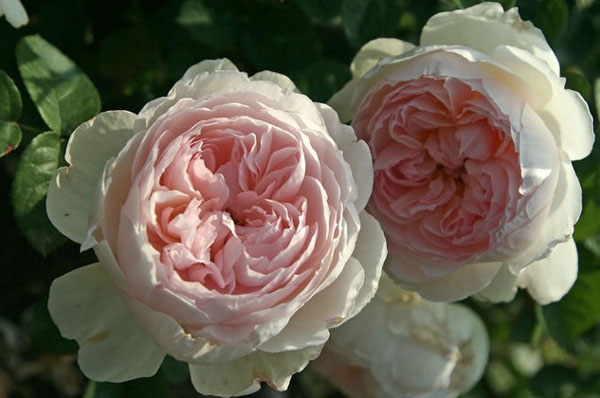
Photo of an English park rose
Abraham Darby, which is famous for its special endurance and strong aroma. The petals are large, rough, have a beautiful color with an orange core and a yellow border. Flowering lasts all summer. Treatment with chemicals is done only for prevention. The root of a park rose takes 3 years to form. Therefore, all weeds around the plant must be removed and the soil loosened. During the dry season, roses are watered at least 4 times a week. Watering should be plentiful.
Some of the most famous varieties of park roses are:
"John Franklin" has a small bush growth. Leaves are bright green. Can be planted individually or in combination with other plants.
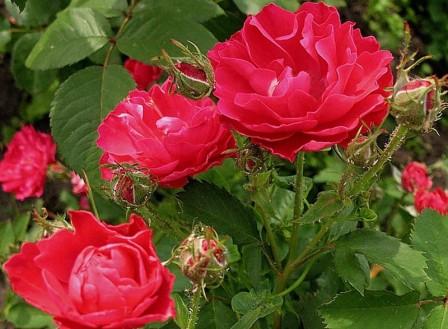
Photo of a rose, name John Franklin
Variety "Remy Martin", which has terry petals brightly yellow color with a pleasant aroma of buds. Buds can be single and in inflorescences. The plant is frost-resistant and is not afraid of pests and diseases.

"Martin Frobisher" grows into a medium-sized shrub up to 1 meter in height. Flowering stretches until the first frost. The petals are double sided with hot pink and white sides.

All these park roses with names and photos they are distinguished by their special beauty and at the same time they are unpretentious in their care. They can be planted in the middle of the site and at the buildings, and at the fence.
These roses are cultivated wild roses - types, forms and varieties. This group received this name for its landscape appearance. V good conditions these roses form large bushes with lush bloom and fruitfulness. Park roses are planted singly, in groups or in borders. Park roses for Russia, in addition to decorativeness, have another main advantage. Park roses hibernate without shelter. In general, these are the same flowering shrubs like mock orange or lilac.
- these are densely leafy shrubs up to 2 m. These roses bloom earlier than other groups and bloom profusely for more than a month.
In autumn, the bushes of these roses are no less elegant due to the colorful color of the leaves and fruits. flowering bushes park roses look great on the lawn, in single and group plantings.
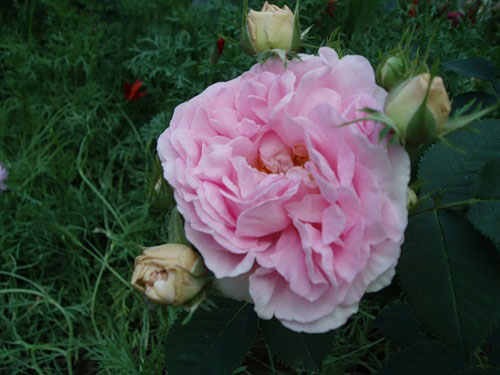
Park roses begin to bloom at the end of May, 2-3 weeks earlier than all other roses. The color of the flowers is from white to purple, orange and yellow are found. Most varieties have double flowers.
Upright shrub. The flowers are pink-white and pink, double and simple, 7 cm in diameter, fragrant. Leaves with a gray coating. Flowering is plentiful, but single. Good winter hardiness.
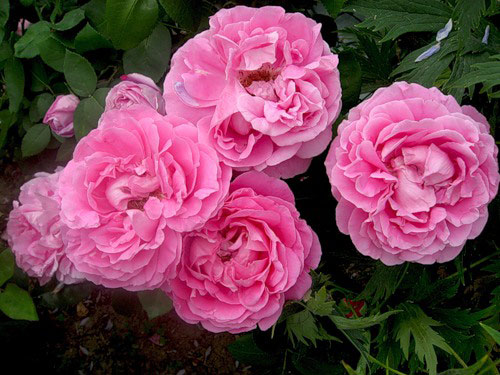
The white rose is the ancestor of the most beautiful and hardiest varieties. Among them stands out "Maydens Blush" - a dense bush with wrinkled foliage. Shoots are reddish. The flowers are spherical, pale pink, double, fragrant. Blooms profusely, high winter hardiness.
"boule de neige "- densely double flowers, white, with a slight pinkish tint, fragrant, solitary or in racemes. The foliage of this rose is dark green. The bushes are erect, gradually growing in width. The flowering is long and abundant.
"Louise Odier "- the flowers of this rose are pink, fragrant. Bushes of powerful growth, 2 m in height and 1 m in width. Flowering is lush during the summer. The variety is frost-resistant.
The bushes of this rose are tall, with drooping shoots, they need support. The flowers are semi-double or double, from light pink to red tones, fragrant. Blooms once a season.

Shrub with brown shoots covered with large and needle-like thorns. Flowers pink, solitary. Leaves of oblong leaflets, glabrous above, pubescent below. The fruits are light red, orange, pear-shaped, with red stalks.
Shrub covered with numerous thorns and bristles; pink flowers, solitary. The fruits are ovate-oblong, red, on long, drooping stalks.
Dahurian rose is hardy, shade-tolerant. Has different garden molds, found in the gardens of Siberia. Suitable for hedges
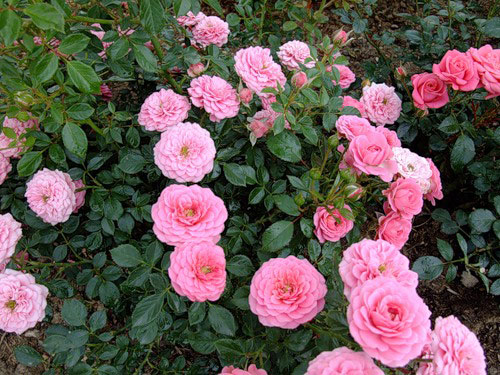
Graceful shrub with curved branches and beautiful foliage. . Flowers simple, small, yellow. Flowering occurs in May.
"canary bird "- a powerful bush, fountain-shaped. The foliage is small, elegant, gray-green, the flowers are yellow, semi-double. Flowering in June. The variety is frost-resistant, however, it can freeze out in harsh winters.
Shrub with climbing long branches, which are strewn with paired, curved thorns. The leaves are green. The flowers are sometimes pink, white, odorless. The fruits are small, spherical, red. Blooms in early July, about 30 days. Blooms profusely in full sun.
The multi-flowered rose is not demanding on soils. Decorative during flowering, when the bush is covered with snow-white flowers, and in autumn with red fruits that remain on the plant until next year.
The dog rose grows in thickets of bushes, along the banks of rivers, in wastelands, along roads.
Shrub with arched, spreading branches, green or brown in color, with hooked curved thorns. The leaves are small with gray or green leaves. The flowers are pink, in many-flowered inflorescences. Fruits are oblong-oval or round, bright red, smooth.
The dog rose is the best rootstock for cultivated roses.
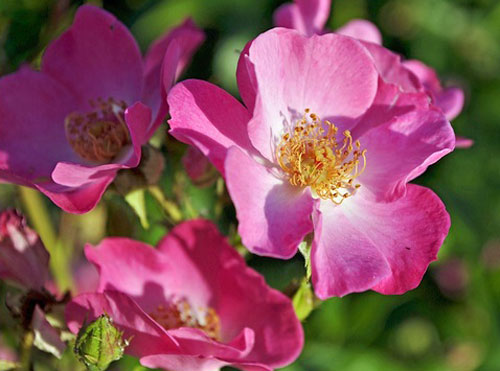
Features of caring for park roses: for better development park roses require a sunny, ventilated place. Park roses can also grow in partial shade, but then they will not bloom so abundantly. It is undesirable to plant them close to large trees.
Small shaping cut. After planting, the first two years, young bushes are almost not pruned. In the future, you need to form a bush in the form of a bowl, while leaving the strongest shoots. Shoots growing inward, as well as small, broken, not overwintered shoots should be removed.
Since park roses begin their vegetation very early, with an increase in daytime temperature of 6 ° C, pruning should be carried out in mid-April in spring.

Remove non-overwintered shoots and last year's fruits. In August, it is recommended to 5 cm, cut strong young shoots. This contributes to the development of shoots and allows them to better tolerate temperature changes.
Not young bushes of park roses are winter-hardy, but young plantings need to be covered.
To do this, you need to spud the bases of the bushes with earth, and wrap the branches in 2 layers of craft paper. This shelter saves the plant from temperature changes. With severe freezing, the park rose bush is restored, growing from the base.
But the rose will not bloom immediately, as the buds are laid on 2-year-old stems. Only a few park roses form flower buds on this year's shoots.
Are park roses the ones that grow in the park? But no! The name park rose has long and quite firmly entrenched in various types wild roses. In particular, they include wild roses (for example, the same wrinkled rose, some garden roses), breeding hybrids.
The park rose begins to bloom in late spring or early summer. This process starts two weeks earlier than other roses and lasts over 30 days. As for the color, it is quite diverse and varies from white to purple, from yellow to orange. This variety of roses is very popular among gardeners due to its ease of care. It is difficult to find a more unpretentious and undemanding plant than park roses, planting and comprehensive care of which is very easy.
Thanks to the efforts of breeders, modern hybrids look just great. They are in no way inferior or polyanthus, grow magnificently and bloom for 2 months. The rich color range puts them on a par with hybrid roses.
Your name this species received not by chance. It was indeed bred by Canadian scientists specifically for the harsh Canadian climate. It is easy to care for them: there is no need for pruning, the plant perfectly tolerates both incredible heat and very severe frosts. Do not be surprised, but even at -35 degrees C, nothing will happen at all.
Another clear advantage of this variety of park roses is that it can be used both in flower arrangements, and planted in separate bushes. The choice of location is up to you.
Consider the fact that "Canadians" bloom in two approaches.
The second wave is not so abundant. Faded shoots do not need to be removed. Thanks to this, in the fall the bushes remain strewn with no less attractive fruits.
The most striking representative of Canadian roses is John Davis. Easily tolerates the harsh Russian winter, so it is often used as a park rose of one of the best varieties for the Moscow region. The John Davis rose is resistant to diseases, it can reach a height of 2.5 meters. The shape of the shoots is arched, they hang down a little. The number of petals - no more than forty pieces. At first they have a bright pink color, then they change to a pale pink. All buds are collected in elegant inflorescences, the number of which reaches 15 pieces, although in most cases 10-12. The diameter of each inflorescence is 7-10 cm. John Davis blooms until frost.

There are two types - bush and climbing. Feature is double flower, on which you can meet a hundred or more petals. calling card this type of roses are unusual flowing branches. Each of them is covered with buds, vaguely resembling pompoms. They are planted in the sun, although they are also not afraid of partial shade.
Unlike the Canadian variety, English roses are a little more difficult to care for. For example, they are more susceptible to disease, less resistant to temperature changes. In winter, English park roses must be covered.
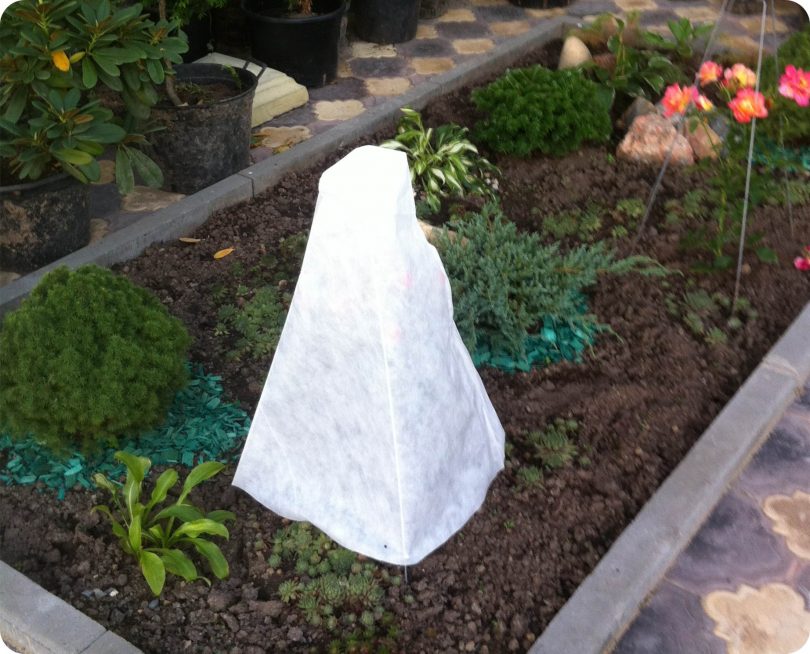
Perhaps the best breeder in the history of park roses can be considered David Austin. It was he who created the variety "Fisherman's Friend", which won many hearts on the planet. Its flowers are purple or purple-raspberry in color, even the reverse side of the leaves is covered with sharp spikes. The height of the bush reaches 120 cm.
The roses bred by Meillant and Cordes are especially popular, and among the re-blooming ones, Bourbon and remontant plants attract attention.
The choice of location does not represent special difficulties. The fact is that no matter what kind of rose you choose, be it a Benjamin Britten or Pichard rose, there will definitely not be any problems with growing. Almost all species love light, grow well on moderately moist soils, but they do not like waterlogging. You can plant in groups or alone - gardens and parks are best suited for this. Also, the care and cultivation of roses is possible for decorating walls and fences.
Previously, roses were dominated by single-flowering ones. Today, breeders have created many varieties of plants that bloom often and profusely even with minimal care. They are completely undemanding to operating conditions, complex agricultural technology is also not needed.

There is one little secret. If roses are planted in the fall, a few weeks before the first frost, they will have time to sprout roots, develop much better, and be much stronger than plants planted in spring.
Seedlings are placed at a distance of 150 cm from each other. Do you want to create a high and at the same time hedge? In this case, the planting density should not exceed 100 cm (preferably 50 cm). Mineral and organic fertilizers no one has canceled, so be sure to take care of their timely introduction into the soil.
You got acquainted with the main photos and already know that given type plants are very unpretentious in operation. There is no need for insulation, you can limit yourself to light shelter. In spring, plants are fertilized after a long and plentiful watering. Feeding is recommended only after a year. From spring to mid-summer, Remy Martin rose and most other varieties are watered 2-3 times a week. Since it is extremely undesirable to water any plants in the heat, this should be done in the early morning or late evening.
Watering is carried out under the very spine. Make sure that water does not fall on the flowers and leaves. In August and September, the plants are not watered. For example, in the Pishard rose, this can cause a fairly abundant growth of young shoots. Unlike other varieties, which often get sick and are attacked by robbers, this happens much less often with park varieties.
Perhaps your main task when caring for the rose Ferdinand Richard and some others will be timely pruning.
In remontant species, flowers can form even on young shoots. Therefore, the more main branches there are, the richer the bush will be.
Every year the bushes grow more and more and, in the end, lose their decorative look. You can solve the problem if you perform anti-aging pruning in time. In autumn, you will need to cut off all the old stems to the very base, remove small shoots and branches that have not bloomed for a long time. To cover the cuts, use oil paint or garden varnish.
Pay special attention to such a care item as preparing for wintering. This is especially true for young plants, which are not yet so resistant to the unexpected "whims" of winter. Bushes can be covered with earth, and branches can be wrapped with craft paper. Although the shelter is simple, it provides a calm wintering, and at the end of winter it will definitely save your roses from the cold wind and unexpectedly bright sun.